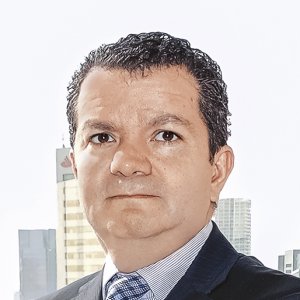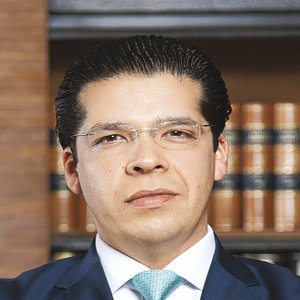From Corporate Structure Overhaul to Cumulating Efficiencies

STORY INLINE POST
Q: What were CFE’s 2017 milestones?
A: The reform of Mexico’s electricity sector meant the overhaul of CFE’s corporate structure. To date, we are operating with 13 new companies. The process involved a considerable operational challenge, which we tackled successfully. Of the 13 new companies created, six are power producers that compete against each other and the rest belong to the private sector. There is also a sole national transmission company for the sake of system security, two new energy trading companies—one for basic supply for small-scale consumers and a qualified user for primarily industrial consumers. We have one distribution company that oversees mid and high voltage with 16 business units spanning different regions, enabling us to better address the challenges pertaining to technical and nontechnical losses. Our business plan pillar is cemented on our financial strength. CFE’s significant financial losses pushed us to renegotiate the company’s collective labor contract in 2016, reframing the utility’s pension system. Through an established incentive, we cut labor liabilities in half, obtaining US$17 billion in savings. In the last three years, we have reduced CFE’s indebtedness compared to the previous year, a trend that will continue in 2018. While CFE’s debt used to be issued entirely in US dollars in 2012, we now have a currency exchange exposure within a 20-30 percent threshold, guaranteeing the company’s financial health during periods of high currency volatility, as we have recently experienced. CFE also managed to significantly reduce operating costs, which decreased close to 13 percent between 2012 and 2016. The combination of all these factors led to us to close 2016 with assets greater than US$26 billion. We will persevere in our financial discipline and cost reduction agenda to attain a sustainable balance toward 2021. The reform confers CFE the possibility of participating directly in the fossil fuels market. We established two additional companies for that purpose, one in Mexico and another in the US. Their primary objective is optimizing fuel supply for CFE’s own consumption and eventually commercializing these fuels to third parties. Close to 80 percent of the cost in electricity generation is associated with the fuels we use, making the gradual replacement of costly and highly contaminating fuels such as fuel oil and diesel, with more cost-effective, environmentally friendly sources such as natural gas and renewables a priority.
From the 25 gas pipelines we are developing, 12 are already operational, 12 are in construction phase and one branch line in the northern region of the country was recently tendered. Between 2012 and 2016, we decreased our emissions relating to electricity generation by 44 percent. We also launched a pilot program for fuel storage in Sonora and Baja California to strengthen the country’s energy security. While the international standard sets fuel storage capacity at 30 days of average equivalent consumption, Mexico only has three. This pilot project will increase Baja California’s fuel storage capacity by 10 extra days and Sonora’s by 14 extra days. Considering an increased number of storage tanks will be available as we transition toward natural gas, we could practically double the country’s fuel storage capacity.
On the operational side, we outlined the objective of a steady reduction in energy loss. In 2012, these losses amounted to 16 percent on average nationwide, versus OECD’s average of 6 percent. Our latest data from October 2017 suggests our energy losses are below 12 percent. For 2018, we are setting a 10-11 percent objective. We are confident we can reach this milestone and will continue working to bring this indicator closer to international standards. Some regions in the country are even below the 6 percent reference, highlighting the challenge for Mexico’s central region. Each additional percentage point of efficiency is more complex than the last. CFE has also designed an ambitious investment plan. We continue investing in new generation plants, with seven of these under construction. The longterm electricity auctions organized by the Ministry of Energy resulted in 52 new clean and renewable energy projects, meaning one in every two states in Mexico will have a new plant powered by clean energy, helping us contribute to the 35 percent of clean energy by 2024 landmark. Renewable energy has considerable potential in the country, as it could double the 55,000MW of installed capacity we have in the coming years. Our investment portfolio is structured to allocate an estimated US$13 billion for the next five years.
Close to US$9 billion will be directed to generation projects involving different technologies and regions, US$2 billion to transmission projects and US$3 billion to distribution projects. The aim is twofold: mitigating energy losses and modernizing technologies we use to foster a national smart grid.
Q: After CFE’s transformation, what is the next step?
A: CFE’s transformation is complete. The productive enterprise of the state has 13 new companies that have a separate and independent legal, accounting, operative and human resource structures. Adapting this new structure to the new rules of the game is also well underway. Our next stage will primarily consist of capturing and cumulating efficiencies, as well as strengthening the company financially and adapting CFE’s culture to a competitive environment from top to bottom. The Ministry of Energy has scheduled CFE’s first audit for 2018 to evaluate the compliance of our restructuring. Another important change was the separation and creation of CENACE, born from CFE’s former intelligence unit to become a full-fledged, independent market operator and National Electricity System manager.
Q: What are the key elements in the intricate processes of the new CFE’s strategic decisions?
A: We now have a new corporate Board of Directors with four independent members of recognized prestige, while each of CFE’s companies has its own management board. Decision-making processes in a newly-created competitive context, added to our corporate rules, dictate that each of CFE’s companies can determine — notwithstanding the effect these decisions might have on the other companies of the group — which investments are the most profitable and should be pursued. A common denominator can be found among CFE’s generation companies in the importance of associations with the private sector to promote new generation projects, especially considering our limited capital and our ongoing efforts for cost reductions and financial discipline. Mexico’s electricity consumption keeps increasing 3 percent per year, meaning there is a window of opportunity for CFE to continue building on alliances and partnerships, while private projects can have an increased participation in Mexico’s electricity sector. The needs of the private sector provide an open door for harmonious development of different technologies and partners, and the long-term electricity auction results attest to that.
Q: If CFE’s financial health allowed it, where would you primarily channel additional capital?
A: In the event CFE generates extra capital, we would definitely allocate it to reducing energy loss, technological modernization and two or three generation projects that would revamp the company’s generation portfolio. When CFE started in 1937, it only had one generation plant. Today, it has 186 nationwide, using different technologies. Eighty years ago, CFE had no transmission nor distribution lines. Today, CFE’s transmission and distribution lines amount to more than 100,000km and 800,000km nationwide, respectively. In 1937, we had close to 100,000 clients. Today, we have more than 42 million. Going forward, our challenges will be directly linked to integrating technological innovation, financial strength and identifying the most profitable energy projects, ideally in association with the private sector, to continue reinforcing Mexico’s electric market.























